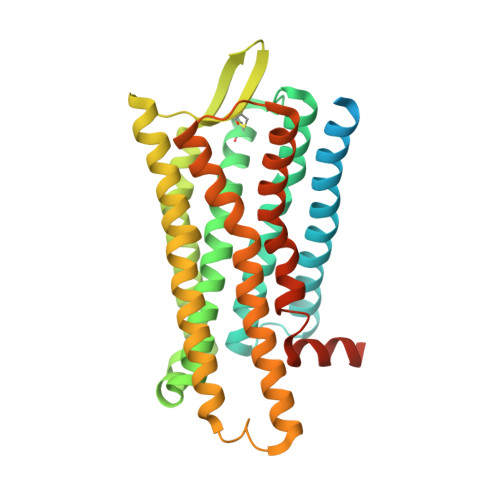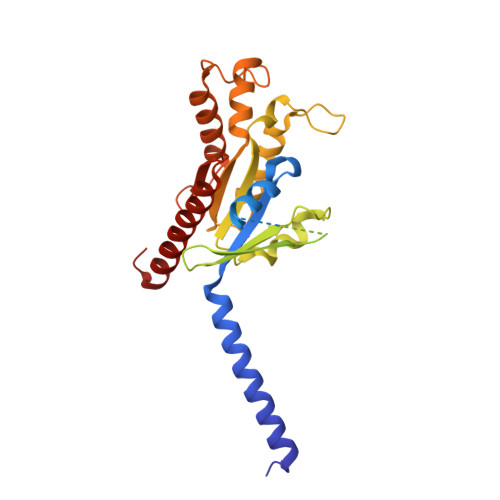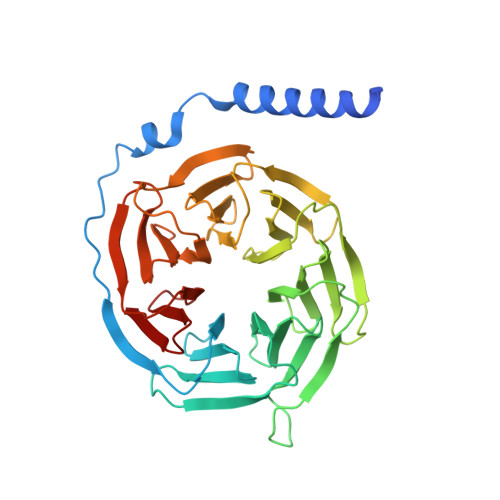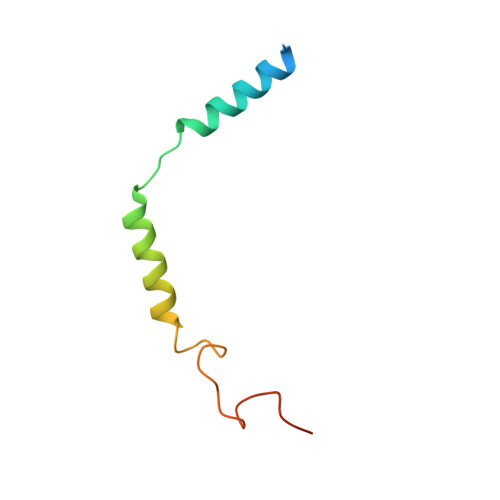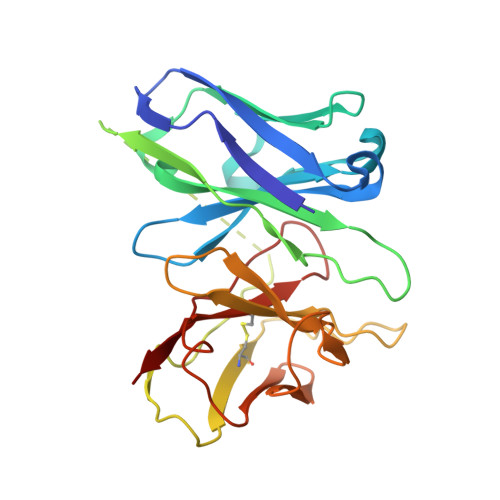Molecular recognition of morphine and fentanyl by the human mu-opioid receptor.
Zhuang, Y., Wang, Y., He, B., He, X., Zhou, X.E., Guo, S., Rao, Q., Yang, J., Liu, J., Zhou, Q., Wang, X., Liu, M., Liu, W., Jiang, X., Yang, D., Jiang, H., Shen, J., Melcher, K., Chen, H., Jiang, Y., Cheng, X., Wang, M.W., Xie, X., Xu, H.E.(2022) Cell 185: 4361-4375.e19
- PubMed: 36368306
- DOI: https://doi.org/10.1016/j.cell.2022.09.041
- Primary Citation of Related Structures:
8EF5, 8EF6, 8EFB, 8EFL, 8EFO, 8EFQ - PubMed Abstract:
Morphine and fentanyl are among the most used opioid drugs that confer analgesia and unwanted side effects through both G protein and arrestin signaling pathways of μ-opioid receptor (μOR). Here, we report structures of the human μOR-G protein complexes bound to morphine and fentanyl, which uncover key differences in how they bind the receptor. We also report structures of μOR bound to TRV130, PZM21, and SR17018, which reveal preferential interactions of these agonists with TM3 side of the ligand-binding pocket rather than TM6/7 side. In contrast, morphine and fentanyl form dual interactions with both TM3 and TM6/7 regions. Mutations at the TM6/7 interface abolish arrestin recruitment of μOR promoted by morphine and fentanyl. Ligands designed to reduce TM6/7 interactions display preferential G protein signaling. Our results provide crucial insights into fentanyl recognition and signaling of μOR, which may facilitate rational design of next-generation analgesics.
Organizational Affiliation:
The CAS Key Laboratory of Receptor Research, Center for Structure and Function of Drug Targets, Shanghai Institute of Materia Medica, Chinese Academy of Sciences, Shanghai 201203, China. Electronic address: zhuangyouwen@simm.ac.cn.








